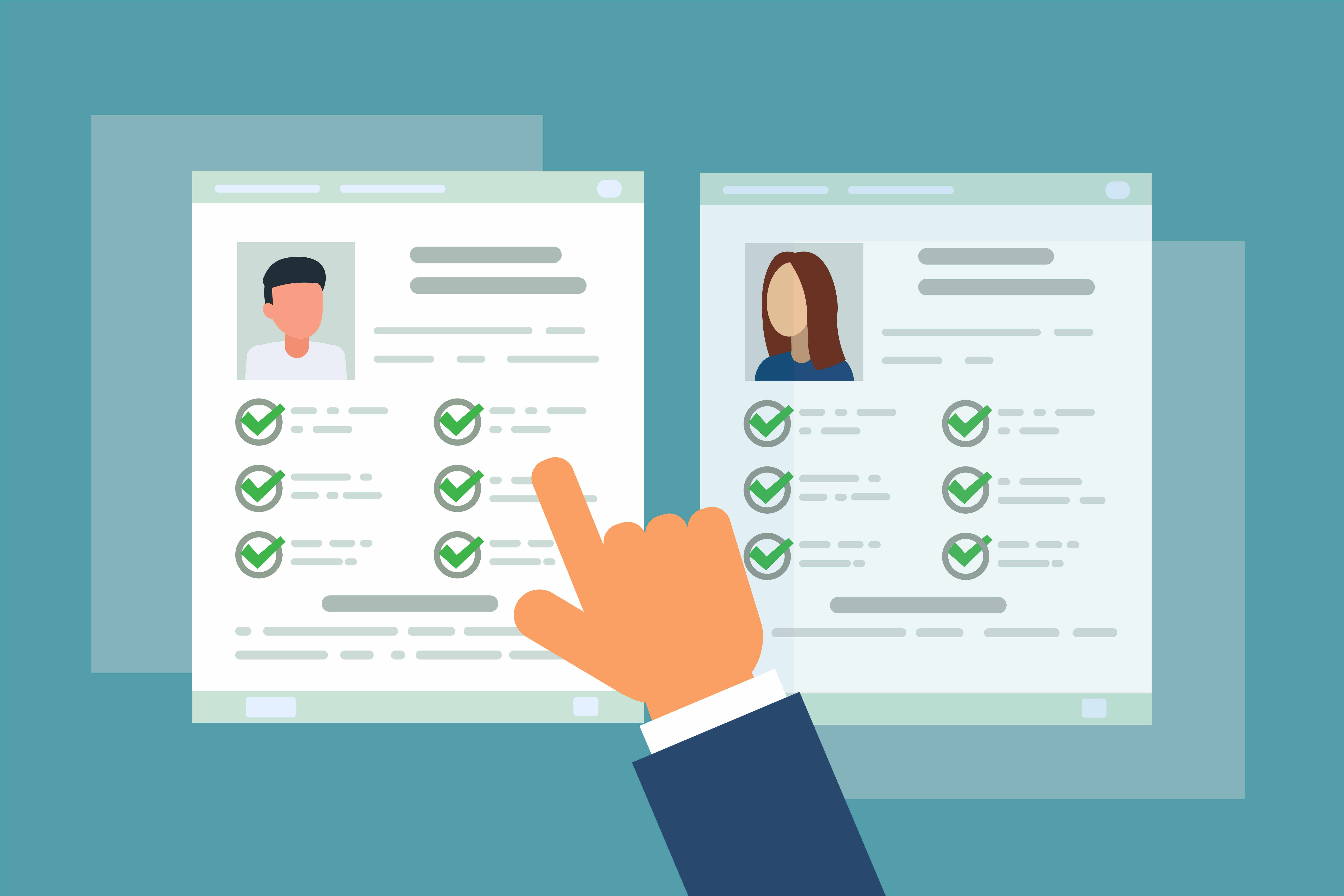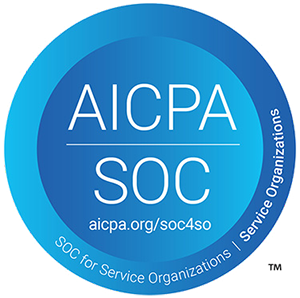What is Hiring Bias?
Hiring bias refers to unconscious or conscious attitudes and prejudices that can affect a hiring manager's judgment during the recruitment process. Hiring bias can occur at any stage of the process, from job posting, resume screening, interview, and final selection.
Why it's important to be aware of hiring bias?
Hiring bias can prevent companies from hiring the most qualified and diverse candidates. It can also result in legal challenges and a negative impact on the company's reputation. It is crucial for companies to recognize and eliminate hiring biases to create a fair and equal employment opportunity for all candidates.
10 different types of hiring bias you need to watch out for
-
Affinity Bias
Affinity bias refers to the tendency to favor individuals who are similar to oneself in terms of age, race, ethnicity, gender, educational background, or other personal characteristics.
- How to identify Affinity Bias: Affinity bias can be identified by examining the demographics of the current employees and comparing it to the candidates who have been hired in the past. If a pattern of favoring certain groups is observed, then affinity bias may be present.
- How to prevent Affinity Bias: To prevent affinity bias, companies can implement objective and standardized recruitment processes that are free from personal preferences and biases. The use of blind recruitment, where the candidate's name, gender, and other personal details are removed from the application, can also help to eliminate this type of bias.
-
Confirmation Bias
Confirmation bias refers to the tendency to seek and interpret information in a way that confirms one's pre-existing beliefs and opinions. In the recruitment process, confirmation bias can result in hiring managers disregarding qualified candidates who do not fit their preconceived notions about the ideal candidate.
- How to identify Confirmation Bias: Confirmation bias can be identified by examining the decision-making process during the recruitment process. If a hiring manager consistently chooses candidates who share their beliefs, opinions, or personal characteristics, then confirmation bias may be present.
- How to prevent Confirmation Bias: To prevent confirmation bias, companies can implement structured interview processes that focus on job-related skills and abilities. The use of behavioral-based interview questions can also help to minimize the impact of personal opinions and biases.
-
Halo Effect
The Halo Effect refers to the tendency to allow a candidate's positive traits in one area to influence a hiring manager's overall assessment of the candidate. For example, if a candidate has excellent communication skills, the halo effect can cause a hiring manager to overlook their lack of technical abilities.
- How to identify Halo Effect: Halo Effect can be identified by examining the assessment of candidates and ensuring that it is based on objective criteria and not influenced by personal opinions.
- How to prevent Halo Effect: To prevent the Halo Effect, companies can use structured interview processes that focus on job-related skills and abilities. The use of behavioral-based interview questions can also help to minimize the impact of personal opinions and biases.
-
Stereotyping Bias:
Stereotyping bias refers to the generalizations or assumptions that people make about a particular group of people based on their gender, ethnicity, age, religion, or other characteristics. This type of bias can influence the way people perceive and judge others, leading to discrimination and unequal treatment.
- How to identify Stereotyping Bias: Stereotyping bias can be identified by paying attention to the language used in conversations and in decision-making processes. For example, if a person assumes that all women are nurturing or all men are competitive, they may exhibit stereotyping bias. Additionally, if someone is judged solely based on their race or ethnicity, rather than their qualifications or skills, that is a clear indication of stereotyping bias.
- How to prevent Stereotyping Bias: To prevent stereotyping bias, individuals can educate themselves on the impact of bias and take steps to challenge their own biases and assumptions. It is also important to be mindful of the language used when talking about different groups of people and to avoid making blanket statements or assumptions about them. Additionally, promoting diversity and inclusiveness in the workplace can help to prevent stereotyping bias.
-
Appearance Bias:
Appearance bias refers to the prejudice or discrimination that a person may experience based on their physical appearance, such as their height, weight, facial features, or clothing. This type of bias can lead to unequal treatment in the workplace and can impact an individual's career progression and success.
- How to identify Appearance Bias: Appearance bias can be identified by paying attention to the comments and actions of others towards individuals based on their physical appearance. For example, if someone is not given equal opportunities or is treated differently because of their clothing or physical appearance, this may be a sign of appearance bias.
- How to prevent Appearance Bias: To prevent appearance bias, it is important to focus on a person's abilities, skills, and qualifications, rather than their physical appearance. Additionally, promoting a workplace culture that values diversity and inclusiveness can help to prevent appearance bias.
-
Gender Bias:
Gender bias refers to the prejudice or discrimination that a person may experience based on their gender, such as being treated unfairly due to their being male or female. This type of bias can impact a person's career progression and opportunities, leading to unequal treatment in the workplace.
- How to identify Gender Bias: Gender bias can be identified by paying attention to the language used in conversations and in decision-making processes. For example, if a person assumes that all women are nurturing or all men are competitive, they may exhibit gender bias. Additionally, if someone is not given equal opportunities or is treated differently because of their gender, that is a clear indication of gender bias.
- How to prevent Gender Bias: To prevent gender bias, it is important to educate oneself on the impact of gender bias and to challenge one's own biases and assumptions. Additionally, promoting diversity and inclusiveness in the workplace can help to prevent gender bias, as well as having clear policies in place that prohibit discrimination based on gender.
-
Age Bias:
Age bias refers to the prejudice or discrimination that a person may experience based on their age, such as being treated unfairly due to their being older or younger. This type of bias can impact a person's career progression and opportunities, leading to unequal treatment in the workplace.
- How to identify Age Bias: Age bias can be identified by paying attention to the language used in conversations and in decision-making processes. For example, if a person assumes that older workers are less productive or less capable, they may exhibit age bias. Additionally, if someone is not given equal opportunities or is treated differently because of their age, that is a clear indication of age bias.
- How to prevent Age Bias: To prevent age bias, it is important to educate oneself on the impact of age bias and to challenge one's own biases and assumptions. Additionally, promoting a workplace culture that values diversity and inclusiveness can help to prevent age bias, as well as having clear policies in place that prohibit discrimination based on age.
-
Education Bias:
Education bias refers to the prejudice or discrimination that a person may experience based on their level of education, such as being treated unfairly due to a lack of a certain degree or type of education. This type of bias can impact a person's career progression and opportunities, leading to unequal treatment in the workplace.
- How to identify Education Bias: Education bias can be identified by paying attention to the language used in conversations and in decision-making processes. For example, if a person assumes that someone with a certain type of degree or education is more qualified for a job, they may exhibit education bias. Additionally, if someone is not given equal opportunities or is treated differently because of their level of education, that is a clear indication of education bias.
- How to prevent Education Bias: To prevent education bias, it is important to focus on a person's abilities, skills, and qualifications, rather than their level of education. Additionally, promoting a workplace culture that values diversity and inclusiveness can help to prevent education bias, as well as having clear policies in place that prohibit discrimination based on education.
-
Cultural Bias:
Cultural bias refers to the prejudice or discrimination that a person may experience based on their cultural background or ethnicity, such as being treated unfairly due to their race or nationality. This type of bias can impact a person's career progression and opportunities, leading to unequal treatment in the workplace.
- How to identify Cultural Bias: Cultural bias can be identified by paying attention to the language used in conversations and in decision-making processes. For example, if a person assumes that all members of a certain cultural group are the same, they may exhibit cultural bias. Additionally, if someone is not given equal opportunities or is treated differently because of their cultural background, that is a clear indication of cultural bias.
- How to prevent Cultural Bias: To prevent cultural bias, it is important to educate oneself on the impact of cultural bias and to challenge one's own biases and assumptions. Additionally, promoting diversity and inclusiveness in the workplace can help to prevent cultural bias, as well as having clear policies in place that prohibit discrimination based on cultural background.
Conclusion
The importance of eliminating hiring bias cannot be overstated. Bias in the hiring process can lead to unequal treatment, reduced diversity in the workplace, and negatively impact an individual's career progression and success. To create a fair and equitable hiring process, it is important to educate oneself on the impact of bias, challenge one's own biases and assumptions, and promote a workplace culture that values diversity and inclusiveness. Having clear policies in place that prohibit discrimination based on factors such as race, gender, age, education, and cultural background can also help to create a more fair and equitable hiring process.







Leave a Reply